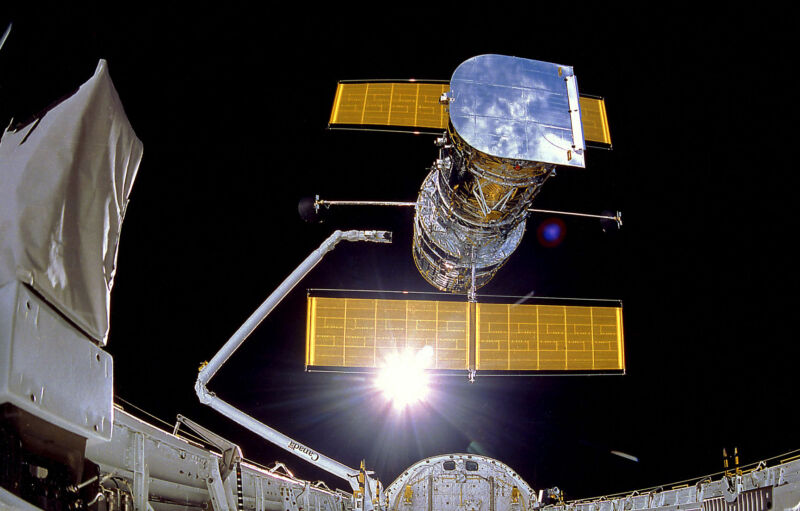
Craveology Cafe and the North Star Science Store are temporarily closed for renovation.

By Dr. Lisa Will, Resident Astronomer at the Fleet Science Center
The Hubble Space Telescope was launched into low-Earth orbit on April 24, 1990. The Space Shuttle Discovery placed the telescope into its orbit about 340 miles above the Earth. At that altitude, the telescope orbits the Earth once every 95 minutes! In the past 30 years, Hubble has uncovered some of the most breathtaking astronomical wonders ever seen.
Why are the Hubble Space Telescope’s images so clear and detailed?
The telescope is above the interference of the Earth’s atmosphere, which blurs out the light from celestial objects for ground-based telescopes. Being above the atmosphere has also allowed the telescope to do observations at infrared and ultraviolet wavelengths, in addition to visible light. It's a common misconception that the telescope’s abilities are due to the large size of its mirror. The primary mirror is 95 inches in diameter, making it about half the size of the mirror of the largest telescope at Palomar Observatory, right here in San Diego County.
Pilars of Creation (2014). Credit: NASA, ESA, and the Hubble Heritage Team (STScI/AURA)
What has the Hubble Space Telescope acomplished in the past thirty years?
The Hubble telescope has contributed a lot to our knowledge of the solar system. It was only meant to be in space for only 15 years, but it has remained in space for 30 years. In that time, it has:
Performed over 1 million observations. Studied our solar system, including storms on the Jovian planets and discovering four additional moons for Pluto. Observed exoplanets and their atmospheres. Provided deeper views into star-forming regions and various forms of nebulae, improving our understanding of the life-cycle of stars. Enhanced our knowledge of galaxy formation and evolution. Revolutionized our understanding of the universe via observations relating to gravitational lensing, dark matter, dark energy and the rate of expansion of the universe.
Interacting Glalaxies (2008). Credit: NASA, ESA, the Hubble Heritage (STScI/AURA)-ESA/Hubble Collaboration, and A. Evans (University of Virginia, Charlottesville/NRAO/Stony Brook University)
To browse some of Hubble’s beautiful images, here is an official NASA Flickr Stream celebrating its anniversary 30 Years, 30 Images. Take some time out today to celebrate the scientists and engineers behind the Hubble Space Telescope, they’ve truly changed our view of the cosmos!
Wishing you clear skies!